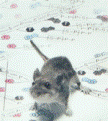Papers in the Biological Sciences

Jay F. Storz Publications
Document Type
Article
Date of this Version
January 2008
Abstract
Phylogeny reconstructions of the globin gene families have revealed that paralogous genes within species are often more similar to one another than they are to their orthologous counterparts in closely related species. This pattern has been previously attributed to mechanisms of concerted evolution such as interparalog gene conversion that homogenize sequence variation between tandemly duplicated genes and therefore create the appearance of recent common ancestry. Here we report a comparative genomic analysis of the α-globin gene family in mammals that reveal a surprisingly high rate of lineage-specific gene duplication and deletion via unequal crossing-over. Results of our analysis reveal that patterns of sequence similarity between paralogous α-like globin genes from the same species are only partly explained by concerted evolution between preexisting gene duplicates. In a number of cases, sequence similarity between paralogous sequences from the same species is attributable to recent ancestry between the products of de novo gene duplications. As a result of this surprisingly rapid rate of gene gain and loss, many mammals possess α-like globin genes that have no orthologous counterparts in closely related species. The resultant variation in gene copy number among species may represent an important source of regulatory variation that affects physiologically important aspects of blood oxygen transport and aerobic energy metabolism.


Comments
Published in Molecular Biology and Evolution 25:3 (2008), pp. 591–602; doi 10.1093/molbev/msn004 Copyright © 2008 Federico G. Hoffmann, Juan C. Opazo, and Jay F. Storz. Published by Oxford University Press on behalf of the Society for Molecular Biology and Evolution. Used by permission. http://mbe.oxfordjournals.org/